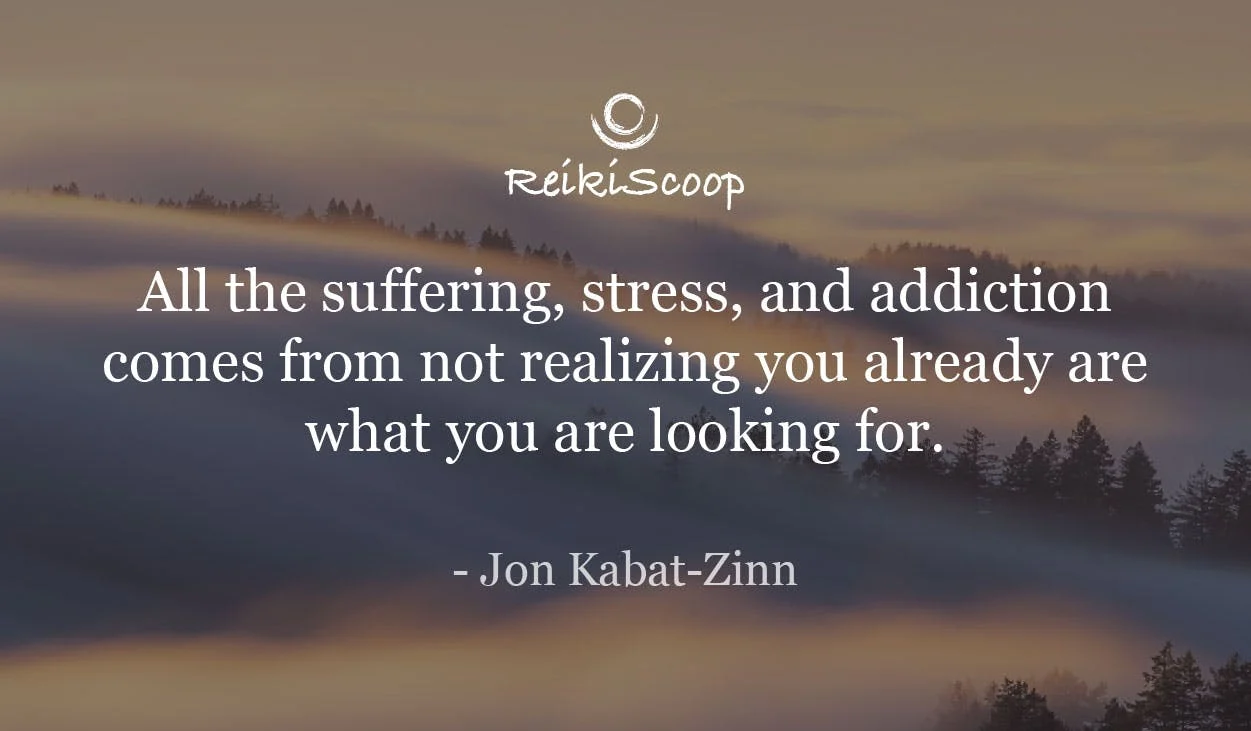We practice Reiki to reinstate or maintain balance at the mental, emotional, and energetic levels.
With time, this exercise helps us understand the changes that occur and gradually helps us become aware of the root cause of each imbalance.
It’s usually at this point when things get interesting.
Human nature drives us toward the unknown, and we learn more about our potential with each new piece of information that reveals itself.
Imbalances can differ widely in nature and intensity.
For example, they might relate to karmic debts or could simply result from recent actions.
However, one common type we encounter is ‘addictions.’
Addictions manifest as excessive cravings that keep coming back with brute force and regularity.
Sometimes we’re aware of this behavior, while other times, it’s part of the routine, and we fail to label it in any way.
At a physical level – addictions represent repeated actions our mind craves.
At the emotional level – addictions usually occur due to traumatic events that may manifest at different intensity levels. They fill up empty spaces that result from lacking ‘desired emotional support.’
Apparently, addictions may act as a ‘defuse kit’ that helps the individual cope with different types of negative energies that manifest as frustrations.
Of course, it’s all a false feeling that can live with you for a very long time and even deepen the initial wound.
Notice that I mentioned ‘desired emotional support’ – this is not the same as ‘proper emotional support.’
While the latter is what you’re actually looking for, when you’re randomly traveling the self-healing path, you’re often seeking what you ‘desire’ and not what’s best for you.
Therefore, it’s common to encounter events, people, and pick up habits we resonate with at that moment. Often, these provide immediate relief without healing the deeper issue.
They give us the ‘joy’ we’re lacking, which is superficial and doesn’t last long. We then ask for more, and sooner rather than later, it becomes an addiction.
While your intention is undoubtedly positive, the method you choose to implement can lead to more harm than good.
One of the most important steps in this initial phase is a change in mindset. Once you acknowledge and accept that true healing takes time, you’ll avoid immediate rewards and focus on what can really make change happen.
Easier said than done…
I know.
Therefore, let’s have a look at some common addiction types and try to highlight a pattern so you can easily recognize the behavior in yourself or loved ones.
Different Types Of Addiction
Eating – excess eating creates digestive issues or weight problems. A diverse diet, or one that suits your metabolism and/or beliefs, will fill you with energy and confidence. The opposite behavior usually points to an imbalance with an emotional/spiritual trigger.
Smoking – tobacco was and still is considered an anti-inflammatory remedy. When used in excess, it can cause pulmonary and heart issues.
Alcohol – moderate use can help the immune and digestive systems while supporting a healthy blood flow. However, excess consumption will lead to toxicity and change in conduct.
Obsessive-compulsive behaviors – lead to a mental dependency on actions that falsely create a state of balance. While the above examples are self-explanatory, this one can be deceiving. For example, physical exercise is recommended by everyone. Yet, suppose you know someone who jogs every day and gets nervous at the slightest thought of skipping one session. In that case, they’re clearly trying to fill up an empty space and bury that negative emotion as deep as possible. Unfortunately, they are not solving the problem but running away from reality.
And honestly, you cannot blame them.
Because it’s challenging to acknowledge addictions...
Let alone get rid of them.
An unhealthy habit that settles at the subconscious level feeds with your energy, allowing less space for clear thinking.
Specifically, this negative energy enters the inner self, where it creates roots and a favorable environment for it to further develop. The stronger it becomes, the harder it is to escape it.
The good news is that Reiki is a wonderful way to approach this issue.
That’s because it simultaneously influences the mental (conscious), emotional, and inner self (subconscious) levels. These elements work together to provide a healthy balance and well-being. Therefore it’s mandatory to work with all of them.
Specific cleansing methods and different Reiki hand positions will better focus the universal life force energy to where it’s most needed. They will help remove toxic traits, negative thoughts, and residual energies, increasing the vibration.
Yet, the best place to start is the Reiki self-treatment. Its role is to balance all structures and place the body in a state of healing. I would always recommend this approach before considering more precise methods.
Adding Reiki symbols like Sei He Ki and Shika Sei Ki to daily self-treatments can make a huge difference. They help cleanse the energy fields thoroughly and support the gradual healing of the emotions that caused the addictions.
We’re All Different
Keep in mind that each person resonates with the energy of their addiction. Some people smoke, while others can’t stand the smell. Between these two extremes are individuals who remain neutral to this habit.
Understanding this fact is crucial before assessing one’s behavior. Furthermore, doing so will lead to a better understanding of the imbalance and what needs to be healed to reinstate the lost balance.
Of course, there won’t be a straight answer right off the gate, and sorting things out will probably take a while.
Still, proper care and consistency can slowly lead to good results.
